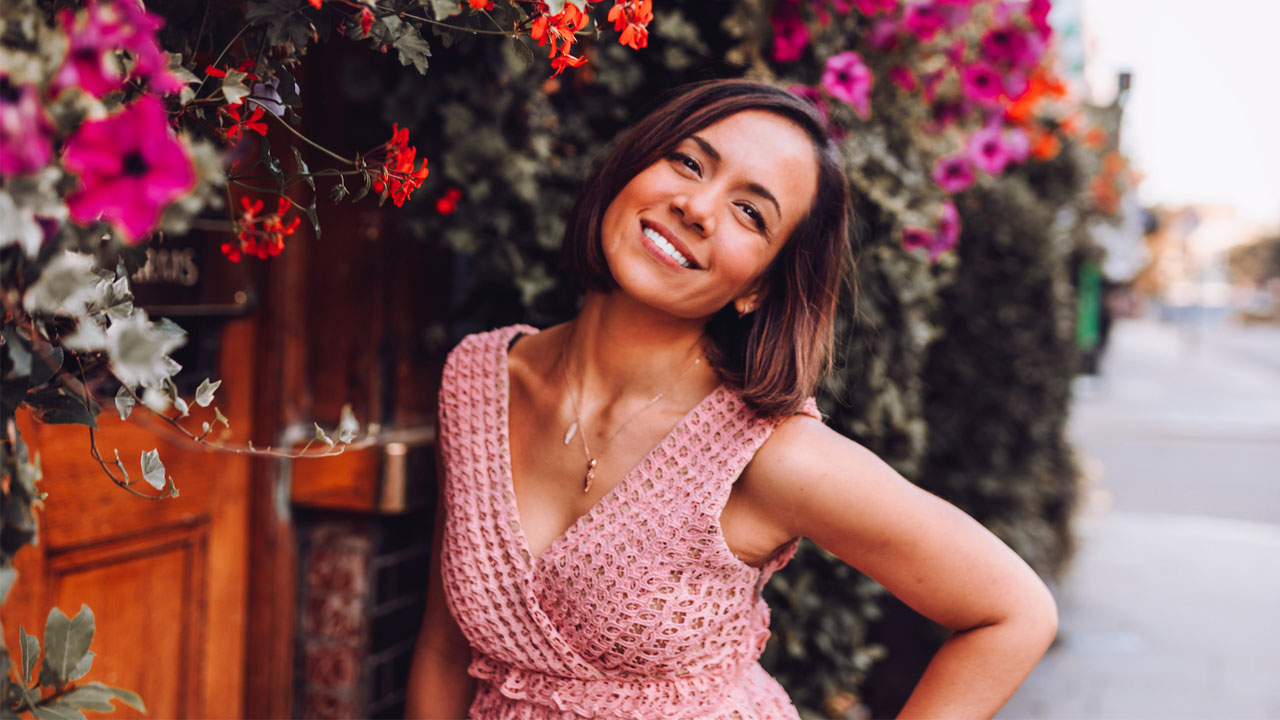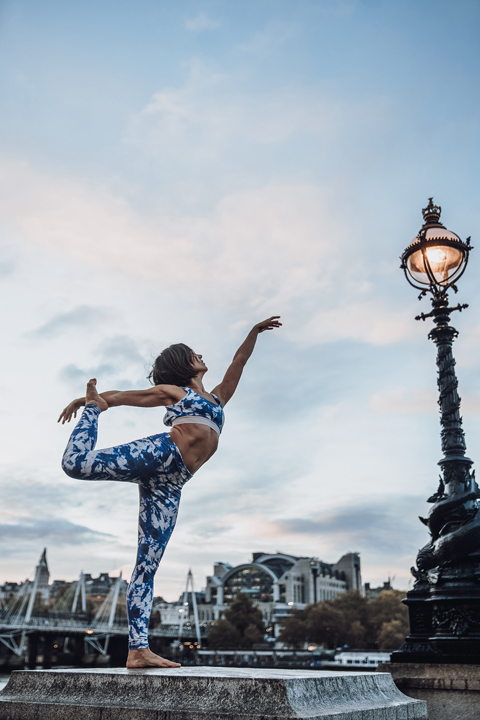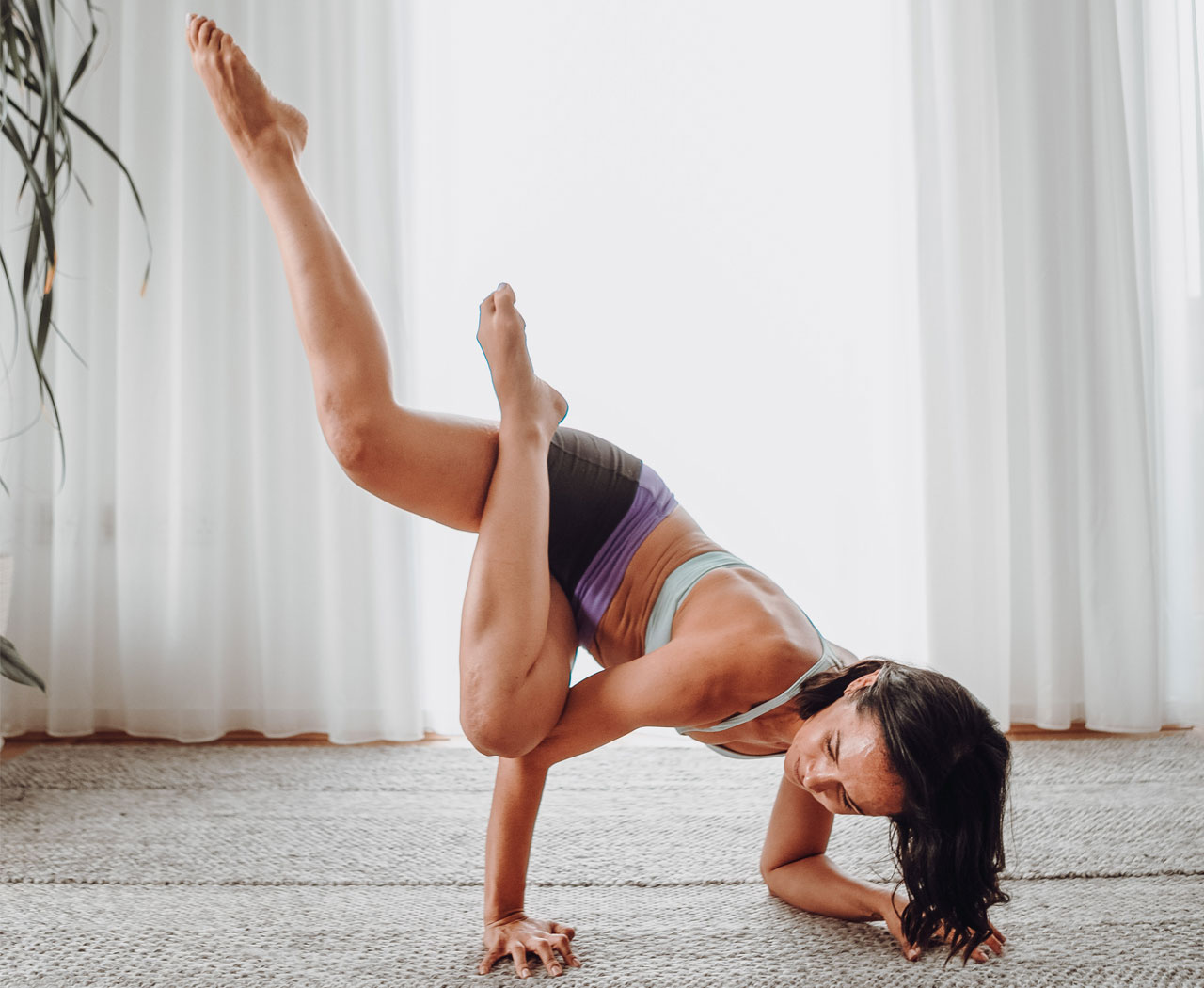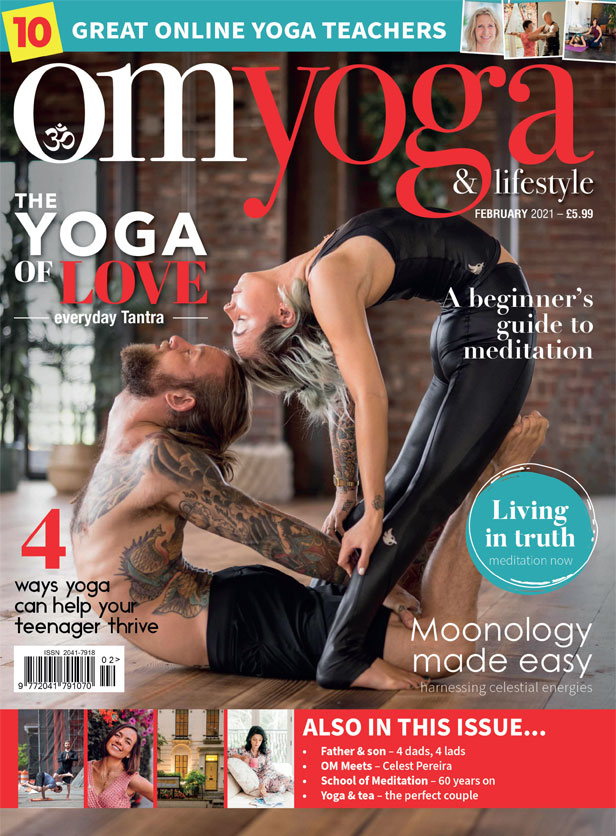
OM meets...
Celest Pereira
Self-confessed anatomy geek and international yoga teacher, Celest Pereira, talks to OM about hypermobility, accountability, and why people need to start asking more questions in their yoga practice
How did you first get into yoga?
I remember walking past a yoga studio 17 years ago and was mesmerised by the beauty and serenity of the class moving as one. As I had always been active and danced since I was little, I naively assumed there would be nothing to it. Of course, I felt like a total nincompoop for thinking that, because it was like trying to pick your nose with your big toe. Weirdly possible but excruciating all at the same time. What kept me going back was my teacher. She was encouraging and kind yet totally unafraid of kicking my butt. It was definitely love at first stretch, but consistency — never my strong suit — meant I made it to the mat when I could, rather than when I should. But every time I made my way back I felt a sigh of relief — that was highly addictive and also clearly necessary to help calm my hyperactivity.
How has your approach to yoga changed over the years?
When I first got into yoga I did Ashtanga and I was convinced it was the holy grail of all yoga styles. In my mind, it was a super-ancient tradition that was crafted thousands of years ago and had been given the most robust blessing from the yoga gods. With further inquiry, it was a bit of a let down to discover it was about as old as the telephone and I noticed that a lot of people around me were getting injuries. After completing my degree as a physiotherapist I kept on punishing my body in yoga, and the injuries made me realise change was sorely needed to keep the practice sustainable.
What would you like to see more of in yoga teaching?
It would be great for students and teachers to develop a curious, questioning mind that isn’t afraid of asking ‘Why?’
Yoga seems to have a bit of a ‘guru complex’, which doesn’t invite debate and analysis. I remember facing a backlash when I started cueing glute engagement in backbends. It was like I had just cursed someone’s mum. However, I am glad I stuck to what I believed in because now it’s commonly seen as one of the most crucial elements to healthy biomechanics. Or to give another example: a very common teaching cue for decades was to depress (lower) the shoulders when the arms move into flexion or adduction, yet this can be detrimental to shoulder health. I know a teacher who taught a class in which he instructed scapular elevation when the arms were lifted, but the students complained and he was asked to leave the studio. No wonder people are scared to suggest new ways of doing things!

How has your hypermobility affected your practice or teaching style?
I was always terrible at sports, due to my hypermobility, but I found that when I did dance or yoga I got praise. In fact, hypermobile people might find themselves being told they have a ‘beautiful practice’ in their first ever class. That need for validation and to be considered ‘good’ at something kept me pushing myself. Over time, I ended up with achy joints, severe abdominal pain and splitting headaches after deep backbends.
However, in some ways I’m happy this happened to me. There’s a wisdom that comes from injury that compels us to do things differently and to be an agent of change. I ended up diving deeper into the world of anatomy and biomechanics, and I incorporated more variety into my training. Instead of just yoga, I now run, climb, and lift weights and my body is, at last, pain free.
Hypermobility is an issue which affects a lot of people who do yoga and the way it’s commonly taught doesn’t provide the right foundation for people to cope with the extreme positions it promotes. We have to remember that yoga is not just about flexibility. It should also educate people about their activation and stability. In fact, we should be working less on people’s passive flexibility and more on their active mobility. This is why I set up Hypermobile Yogis (hypermobileyogis.com) with my good friend Adell Bridges, an online community that offers support to others like us.
How do you think teacher training courses can improve?
Yoga trainings need to be held accountable in a much bigger way by the governing bodies that exist. There needs to be some type of auditing process that assesses the quality of the teaching. At the same time, trainings should make it harder for students to qualify. There should be more required reading on biomechanics and anatomy to make sure there is a well-rounded understanding of the human body.
I think we also need to openly share what is required to make teaching yoga a sustainable job. It’s very common to hear yoga teachers say: “I hate marketing myself.” This is crazy, because no matter how you look at it, ultimately you’re a business owner that needs to market yourself as a product. If you aren’t willing to do this, it’ll be extremely hard to make a living in this saturated market place.
What advice would you offer to newly-qualified teachers?
At first, when you start teaching, don’t be afraid to plan a class and teach it as many times as you need to get used to the cues and directions. But as your confidence grows step out of the mould and give people a space to explore a variety of movements. You got into this job because you love people and you care about them. Most people are spending huge amounts of time in a passive body position and are doing two-dimensional movements daily. Don’t let your class be another passive, two-dimensional activity. Provide the needed activation and variety that is sorely missing in our modern society.
What are your reflections on 2020 and what are your plans for 2021?
Like many teachers, the pandemic encouraged me to focus more on my online offerings and now I have fully transitioned online. Of course I miss teaching in studios but I’m also so grateful I can keep sharing through these tough times. I’m so excited that this year, 2021, I’ll be launching an online 50-hour teacher training and Adell and I will be releasing our book for hypermobility called, “Too Flexible To Feel Good”.
Find out more about Celest Pereira at: celestpereira.com





